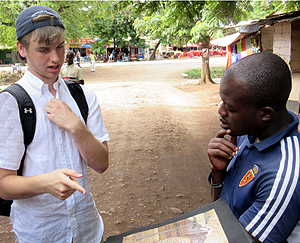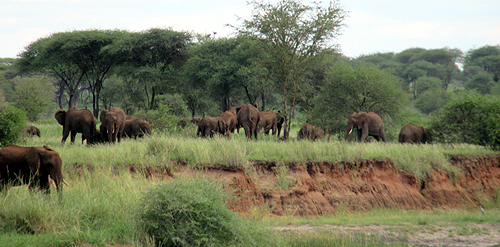
I was in Tarangire two weeks ago as the drought broke, and it seems like the rains ever since have been especially hard.
I wouldn’t say “relentless,” but according to the folks there it was sure close to relentless. The 6-week drought was serious, and among the exploding grass and deep green of the park are sand straws and dead twigs.
Drought/flood/drought/flood seems to be the new normal here, and it was absolutely not normal in the old days.
Now staying in the farming community of Karatu it’s crazy to see all the vibrant almost luminescent green of the valleys and hillsides that frames corn fields of nearly failed crops.
A farmer in Illinois can handle climate change a lot better than a farmer in Karatu. The animals in Tarangire are handling it just fine … so far, as evidenced by the enormous numbers of very healthy elephant with many, many very young babies.
In fact a random family of elephant in Tarangire is likely to have a new-born, several 2- and 3-year olds, a 5-year old or two, and at least one 8-year old. That suggests a long streak of health.
Erosion is unbelievable. Overgrazing which has been a problem for decades, is exacerbated and the stock gets sick quickly from feast and famine, something that a lion can do but a Guernsey cannot.
Our elephant encounters in Tarangire were terrific. I spaced our two vehicles among three families that were near the track not far from Silale, and we just sat there for nearly an hour.
We watched the babies slip and slide, the toddlers wrestle, the young males trumpet, random trees felled for seemingly little reason, and sadly, a very old and big female out of habit pull up grass and stuff it into her mouth but then drop it because she had no more teeth left for chewing.
Less than two months ago I was in Botswana which I often see reported as the world’s best elephant experience. It’s excellent for sure, but as I’ve been saying for at least ten years now, the best elephant experience is Tarangire!
